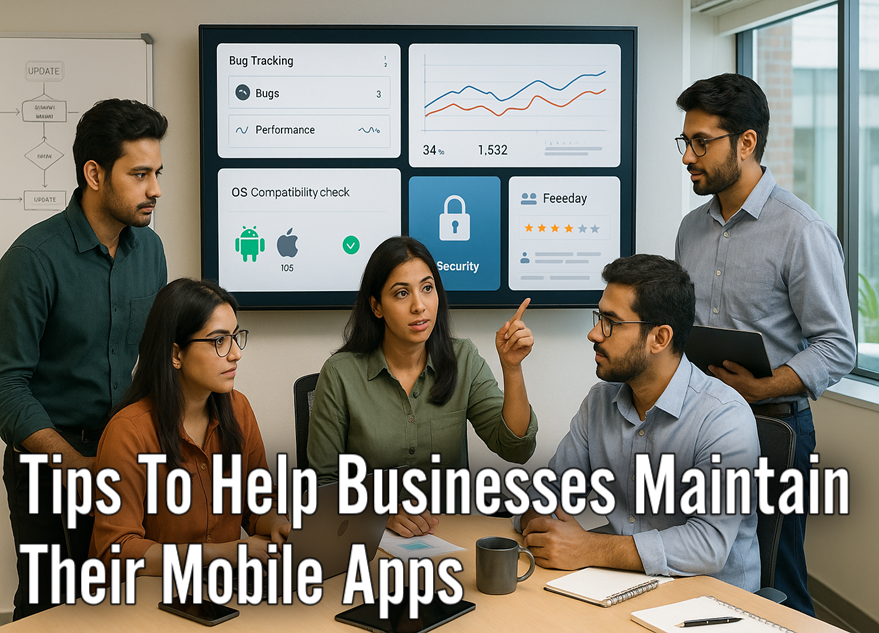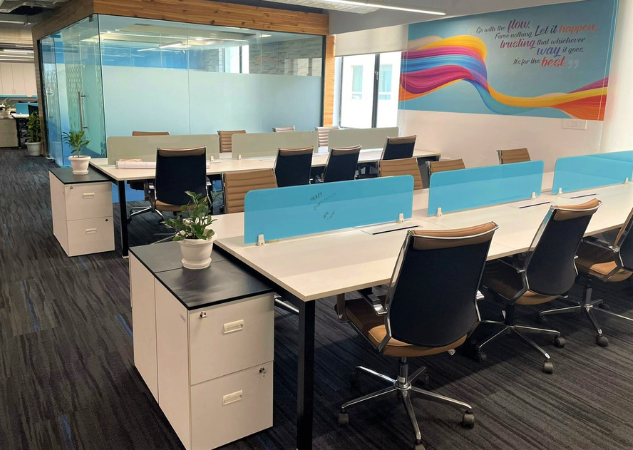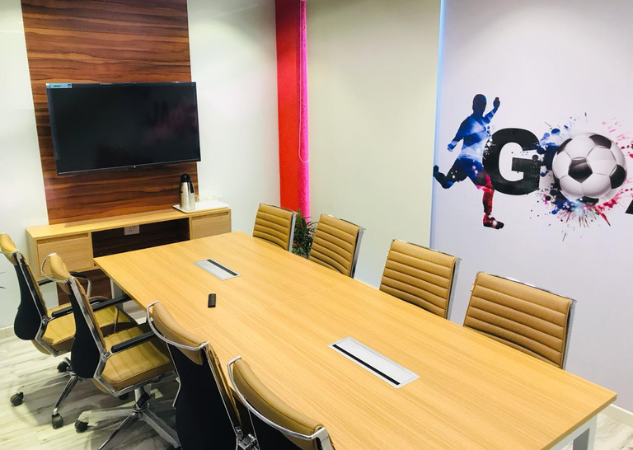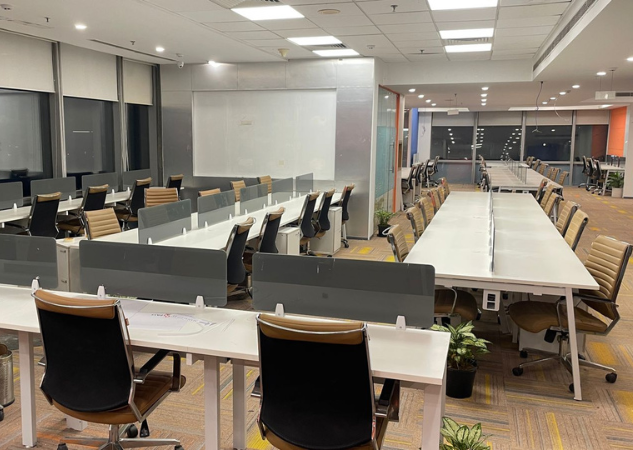For small and medium enterprises (SMEs) aiming to enhance their digital presence, having a well-designed app is crucial. An effective SME app not only streamlines operations but also improves customer engagement and boosts business efficiency. Identifying key features that contribute to an app’s functionality can significantly impact its success and user satisfaction. This blog outlines ten essential features every SME app should incorporate to maximize its effectiveness and meet business goals. By integrating these features, SMEs can ensure their app delivers value and supports their growth objectives.
💡 Are you looking for Coworking space in Gurgaon, Noida or Delhi? We are just a call away.
Call Now: 08999 828282
10 Key Features Every SME App should Have
- User-Friendly Interface
- Customization Options
- Secure Payment Gateway
- Real-Time Analytics
- Push Notifications
- In-App Support and Chat
- Offline Functionality
- Seamless Integration with Other Tools
- Social Media Integration
- Scalability

1. User-Friendly Interface
A simple, intuitive interface is crucial for an SME app. Users should be able to navigate the app effortlessly, without needing extensive instructions. A clean design, easy navigation, and clear call-to-action buttons make the app more appealing and functional, ensuring that users keep coming back.
2. Customization Options
Customization allows users to personalize their experience within the app. Features like customizable dashboards, notification preferences, and user profiles cater to individual needs and enhance user satisfaction. For SMEs, this means better user retention and higher customer satisfaction.
3. Secure Payment Gateway
For SMEs offering products or services online, a secure payment gateway is non-negotiable. The app should support multiple payment methods, including credit/debit cards, UPI, and mobile wallets, and comply with security standards to protect user data from breaches.
Also Read: Tips To Help Businesses Maintain Their Mobile Apps
4. Real-Time Analytics
Real-time analytics give SMEs the ability to track user behavior, sales trends, and other critical metrics on the go. This feature helps business owners make informed decisions quickly, adjust their strategies, and improve their offerings based on data-driven insights.
5. Push Notifications
Push notifications are a powerful tool to keep users engaged. They can be used to inform users about new products, special offers, or important updates. However, it’s essential to balance frequency and relevance to avoid annoying users, which could lead to uninstalls.
6. In-App Support and Chat
Providing in-app support, such as live chat or AI-driven chatbots, ensures that users can get help whenever they need it. This feature can significantly enhance the user experience, leading to higher satisfaction and increased customer loyalty.
7. Offline Functionality
Offline functionality allows users to access certain features of the app even without an internet connection. For example, users can browse product catalogs, save data, or view previously downloaded content offline. This is particularly important for SMEs whose customers might not always have reliable internet access.
8. Seamless Integration with Other Tools
An SME app should integrate smoothly with other essential tools like CRM systems, inventory management, accounting software, and social media platforms. This integration streamlines business operations and ensures that all data is synchronized across platforms, reducing manual work and the potential for errors.
💡 SMBs looking for HR, Marketing, Technology and Funding solutions for their business.
Call Hello Jarvis 994 8000 800
9. Social Media Integration
Social media integration allows users to share their experiences, purchases, or services directly from the app. This feature not only enhances user engagement but also acts as free marketing for the SME, potentially attracting new customers through word-of-mouth.
10. Scalability
As SMEs grow, their app should be able to scale with them. This means that the app architecture should allow for the addition of new features, users, and data without compromising performance. Scalability ensures that the app remains functional and efficient as the business expands.
To conclude, developing an SME app with these essential features can significantly boost customer satisfaction, streamline operations, and drive business growth. Whether your SME is just starting out or is already established, incorporating these features will help ensure that your app meets the needs of both your business and your customers. Come and set up the office at The Office Pass (TOP) co-working spaces available in Delhi and NCR to enjoy all the modern-day facilities. Contact us for more details at 08999 828282.
FREQUENTLY ASKED QUESTIONS (FAQS):
Question: What is the most important feature an SME app should have?
Answer: The most important feature is a user-friendly interface. It ensures that users can easily navigate the app and find what they need without getting frustrated.
Question: Why is customization important for an SME app?
Answer: Customization allows users to personalize their experience, making the app more useful and engaging for them. It helps in improving user satisfaction and retention.
Question: How does a secure payment gateway benefit an SME app?
Answer: A secure payment gateway protects users’ financial information and builds trust. It also supports various payment methods, making transactions easier and safer for customers.
Question: What is the role of real-time analytics in an SME app?
Answer: Real-time analytics help business owners track user behavior and sales trends instantly. This information is crucial for making quick, data-driven decisions to improve the business.
Question: How can push notifications help in an SME app?
Answer: Push notifications keep users informed about new products, offers, or updates. When used wisely, they can increase user engagement and encourage repeat visits to the app.
Question: Why is in-app support essential for SME apps?
Answer: In-app support, like live chat or chatbots, allows users to get help whenever they need it. This feature improves customer satisfaction and can lead to higher loyalty.
Question: What are the benefits of offline functionality in an SME app?
Answer: Offline functionality lets users access certain features without an internet connection. This is helpful for users in areas with poor connectivity, ensuring they can still use the app.
Question: Why should an SME app integrate with other tools?
Answer: Integrating with other tools, like CRM or inventory management systems, makes business operations smoother. It saves time and reduces the risk of errors by ensuring all data is connected.
Question: How does social media integration help an SME app?
Answer: Social media integration allows users to share their experiences or purchases directly from the app. This can increase the app’s visibility and attract more customers through word-of-mouth.
Question: What does scalability mean for an SME app?
Answer: Scalability means the app can grow with your business. As your SME expands, the app should be able to handle more users and features without losing performance, ensuring it stays efficient over time.










